The Immune System is a complex network of cells, tissues, and organs that work together to defend the body against invaders, such as bacteria, viruses, and other harmful pathogens.The Immune System identifies foreign invaders by recognizing proteins on their surfaces called antigens. When an antigen is detected, the Immune System responds by specific proteins that bind to the antigens and neutralise or mark the pathogens for destruction.
Table of Contents
Key Organs of Immune System

White Blood Cells (Leukocytes)-
White Blood Cells (WBCs), or leukocytes, are crucial components of the Immune System, serving as the body’s primary defence against infections and foreign substances. These cells are produced in the bone marrow, the soft, spongy tissue found inside most bones. Once produced, WBCs circulate throughout the body via the bloodstream and the lymphatic system, a network that also plays a key role in immune defence.
Types of White Blood Cells

There are several types of white blood cells, each with specific functions-
Lymphocytes-
These cells are primarily involved in the adaptive immune response, which is the body’s tailored response to specific pathogens. Lymphocytes include-
- B cells- They produce antibodies, which are proteins that specifically target and neutralise foreign invaders such as bacteria and viruses.
- T cells- They have various roles, including killing infected cells, activating other immune cells, and regulating immune responses.
Phagocytes-
These cells engulf and digest foreign particles and dying cells, effectively cleaning up the body. Key phagocytes include-
- Neutrophils- These are the most abundant type of white blood cells and are among the first to arrive at a site of infection, where they ingest and destroy invaders.
- Macrophages- Derived from monocytes (another type of WBC), macrophages reside in tissues and have a similar function to neutrophils but also play a role in alerting the rest of the Immune System to the presence of invaders.
The balance and function of these white blood cells are crucial for the body’s ability to fight infections and respond to other immune challenges. When pathogens enter the body, they are recognized by their antigens, and the Immune System is activated. White blood cells then respond in various ways, such as producing antibodies, directly attacks infected cells, or coordinating the activities of other immune cells to ensure an effective response.
Lymphatic System
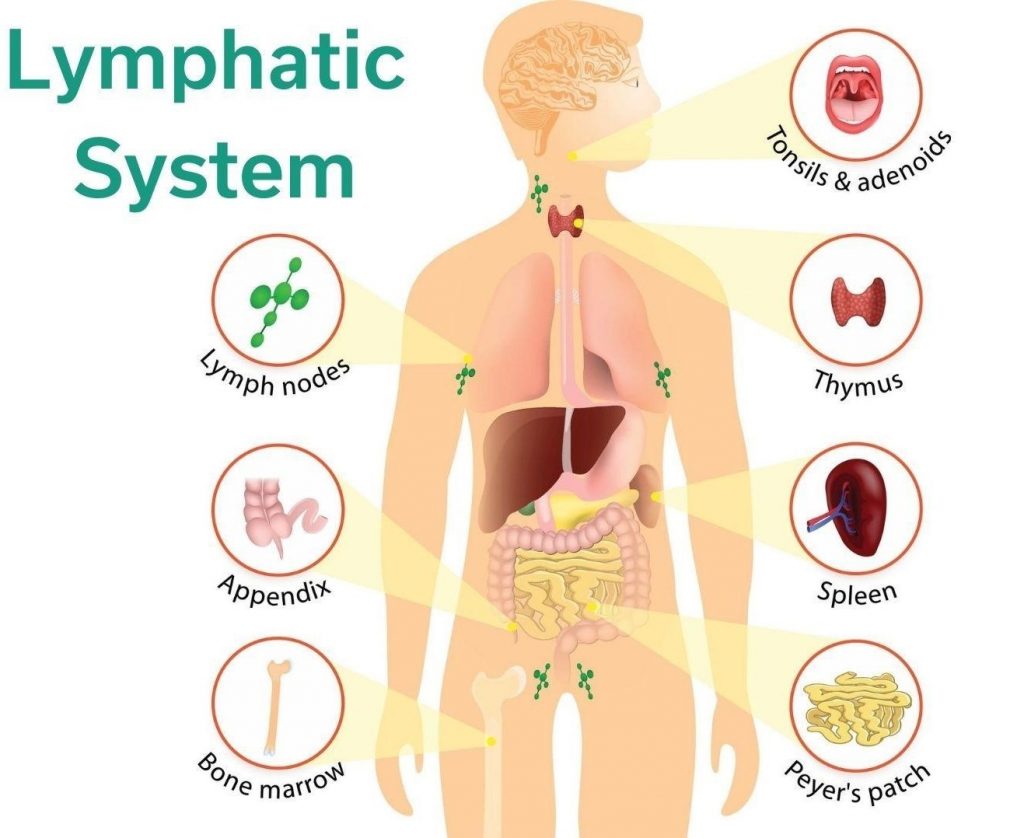
The lymphatic system is a critical part of the Immune System, functioning alongside the circulatory system to protect the body against pathogens and maintain fluid balance. It comprises lymphatic vessels, lymph nodes, and several organs, each playing a unique role in immune defence and homeostasis.
Lymphatic Vessels
These are a network of tubes throughout the body that carry lymph, a clear fluid that originates from blood plasma. Lymph contains white blood cells, especially lymphocytes, which are crucial for the immune response. These vessels transport lymph from tissues back into the bloodstream, filtering it through lymph nodes along the way.
Lymph Nodes
Small, bean-shaped structures scattered throughout the body, particularly in the neck, armpits, and groin. They act as checkpoints for the lymph flowing through the lymphatic vessels. Within lymph nodes, lymph is filtered, and pathogens are exposed to white blood cells, which can then mount an immune response. Lymph nodes can become swollen and tender during infection, indicating active immune responses.
Spleen
This organ, located under the ribcage to the left of the stomach, serves multiple functions. It filters blood, removing old or damaged red blood cells and pathogens. The spleen also produces white blood cells and acts as a reservoir for blood, releasing it during times of high demand, such as during an injury.
Thymus
Situated behind the breastbone, the thymus is where T cells, a type of lymphocyte, mature. It is most active during childhood and gradually becomes less active after puberty, eventually shrinking in size. The mature T cells then leave the thymus to perform their functions in the immune response, particularly in recognizing and destroying infected cells.
Together, these components of the lymphatic system work to maintain the body’s defence mechanisms against infections and diseases, while also contributing to the circulation of fluids and immune cells throughout the body.
Also Check – 9 Important function of Lymphatic System
Bone Marrow
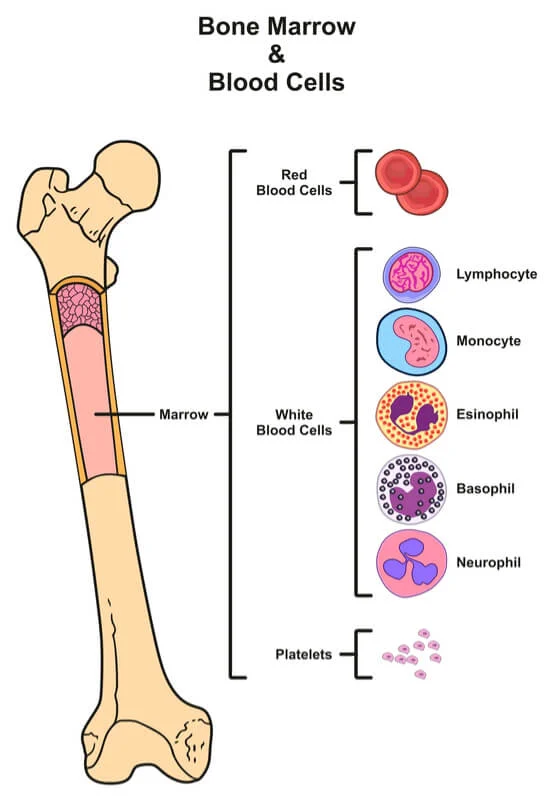
Bone marrow is a vital organ within the Immune System, located in the hollow spaces inside certain bones, such as the hip and thigh bones. It’s a soft, spongy tissue that plays a crucial role in the production of blood cells through a process known as hematopoiesis.
There are two types of bone marrow-
- Red Marrow- This type is responsible for producing blood cells, including red blood cells (which carry oxygen), white blood cells (which fight infections), and platelets (which help with blood clotting). Red marrow contains stem cells that can develop into any type of blood cell the body needs.
- Yellow Marrow- Consisting mostly of fat cells, yellow marrow is found in the central cavities of long bones. In emergencies, such as severe blood loss, the body can convert yellow marrow back into red marrow to increase blood cell production.
White blood cells, or leukocytes, are a key component of the Immune System, and they are produced in the bone marrow. These cells are divided into various types, each with specific functions in defending the body against pathogens-
- Lymphocytes (B cells and T cells)- Involved in the adaptive immune response, recognizing specific antigens and remembering past invaders.
- Phagocytes (neutrophils and macrophages)- Engulf and destroy pathogens and debris.
The bone marrow’s ability to produce white blood cells is crucial for maintaining the body’s defence mechanisms against infections, diseases, and foreign substances.
Also Check – How Lymph is Formed ?
Skin and Mucous Membranes
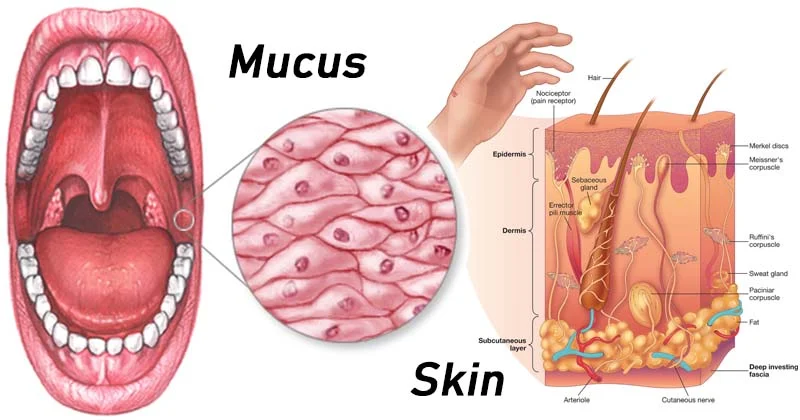
Skin and mucous membranes are crucial components of the Immune System, serving as the first line of defence against pathogens, which are harmful microorganisms like bacteria and viruses.
Skin
This is the body’s largest organ and forms a physical barrier that protects internal tissues from external threats. The outer layer of the skin, called the epidermis, is made up of tightly packed cells and is coated with substances like oils and sweat, which have antimicrobial properties. This barrier is tough for pathogens to penetrate. Minor injuries like cuts or abrasions can compromise this barrier, which is why it’s important to keep wounds clean to prevent infection.
Mucous Membranes
These are tissues that line body cavities and passages that are open to the external environment, such as the nose, throat, lungs, and gastrointestinal tract. Unlike the skin, mucous membranes are moist, which helps them trap and immobilise pathogens. Mucus, a sticky fluid produced by mucous membranes, captures microbes and foreign particles. Tiny hair-like structures called cilia, found in the respiratory tract, move the mucus and trapped particles towards the throat, where they can be coughed out or swallowed. In the stomach, gastric acid can neutralise many pathogens that are swallowed.
Together, the skin and mucous membranes form a physical and chemical barrier that prevents the entry of pathogens into the body, playing a vital role in maintaining health and preventing infections.
Also Check -Difference between Lymph and Plasma
Appendix and Tonsils
The appendix and tonsils are components of the lymphatic system and play roles in the body’s immune defence mechanisms.
Tonsils
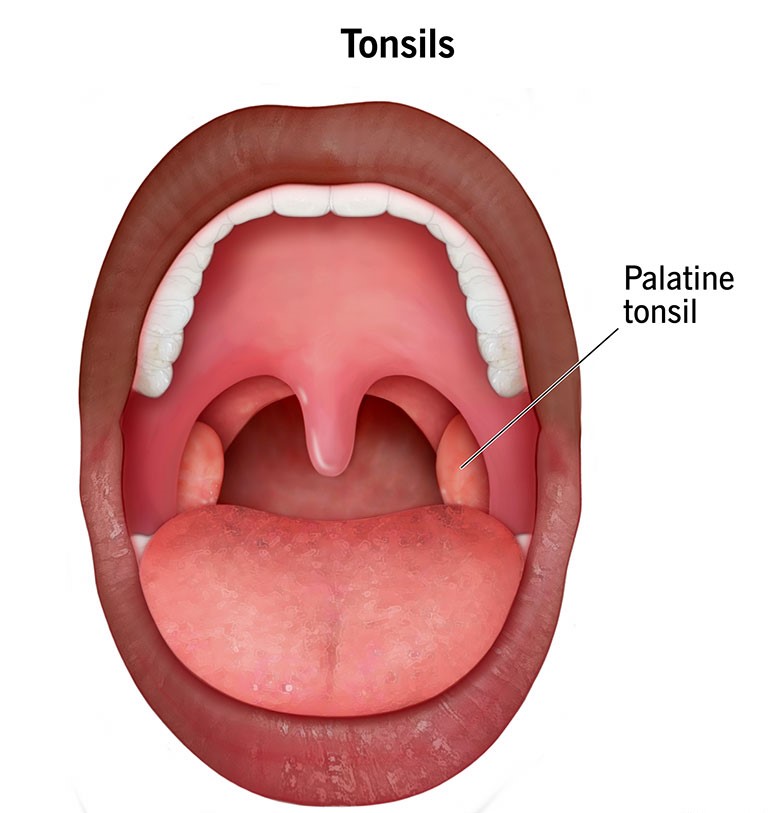
Located at the back of the throat, the tonsils are the first line of defence in the Immune System. They contain lymphocytes, which are a type of white blood cell important for fighting infections. When pathogens enter the mouth or nose, the tonsils can trap these invaders and activate the lymphocytes to attack and destroy them. There are three groups of tonsils- the palatine tonsils (which are what most people refer to as “the tonsils”), the pharyngeal tonsil (or adenoid), and the lingual tonsils at the base of the tongue. Each of these structures helps protect the body from infection by trapping pathogens and producing antibodies.
Appendix
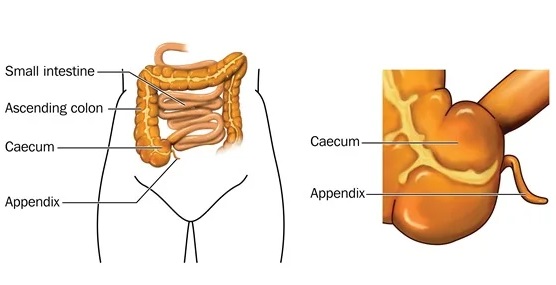
Once thought to be a useless organ, the appendix is now recognized to have a role in the Immune System. Located at the junction of the small intestine and the large intestine, the appendix contains lymphoid tissue that can produce white blood cells. The appendix is believed to function as a reservoir for beneficial bacteria in the gut. After an infection, when harmful bacteria might wipe out the beneficial bacteria in the intestines, the appendix can help repopulate them. This is important for overall gut health and helps in the immune response.
Also Check – The immunological functions of the Appendix: An example of redundancy?
Both the appendix and tonsils contribute to the body’s ability to fight infections by producing and storing white blood cells and by participating in the production of antibodies against pathogens.
